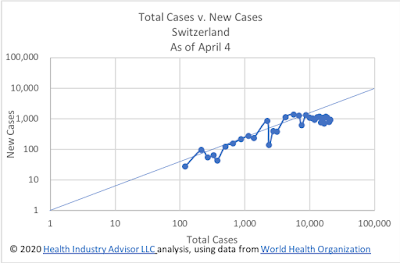On March 23, 2010, President
Barack Obama signed into law the most sweeping overhaul of the health care
system since Lyndon Johnson established the Medicare and Medicaid programs via
the Social Security Amendments of 1965. Obama did so without a single
Republican vote and against the wishes of a majority of US voters.
Last Tuesday, voters exacted
their revenge by surprisingly electing Donald Trump as Obama’s successor, and
putting the Affordable Care Act (ACA or, “Obamacare”) on life support.
Since the election, pundits have
been scrambling to determine the fate of the health care system. Financial
markets have punished medical care providers (HCA, Tenet, Community Health
Systems) and device manufacturers, while rallying behind health insurers and
drug manufacturers, reflecting the market’s view of winners and losers from an
anticipated ACA overhaul.
Before attempting to guess how
far and how fast ACA will be overhauled, it’s important to re-visit how well,
or poorly, the ACA met its original expectations.
Contemporaneous writings at the
time of ACA passage trumpeted three primary goals for the legislation:
·
Reduce the number of uninsured Americans
·
Bend the cost curve of national health care
expenditures
·
Render health care more affordable to average
Americans
For the past several months, I
have conducted extensive research of industry literature, government-published
data and research analyses. Based on this review, I conclude that ACA met only
1 of these goals – to reduce the number of uninsured Americans – and failed on
the other two. This conclusion may help
inform how any ACA revision or replacement should occur.
Reduce the number of uninsured Americans – success (albeit nuanced)
ACA is touted as having added as
many as 20 million Americans to the health insurance rolls. On its face, this
is an outstanding accomplishment, and argues for ensuring that we don’t go
backwards by making dramatic changes to the system. One should dig deeper, however, to understand
the characteristics of the newly insured, and the remaining uninsured.
Consider:
- A majority of the reduction in uninsured rates resulted
from Medicaid Expansion in those states that opted for that provision of the
Act. Most of the (underwhelming) enrollment via the Exchanges was offset by the
8 million that lost employer-sponsored coverage since 2010.
- The greatest improvement in insurance coverage
was observed among the poor (at or near the federal poverty level) and
minorities. Outstanding! Conversely, the largest segments of remaining
uninsured are working class families and the young. ACA seems to have pushed
healthcare even further from reach for these segments of the population.
Bend the cost curve of national health care expenditures - failure
Throughout the recent
Presidential campaign, Democrats touted ACA’s success in lowering the rate of
health care inflation. As recently as today, in his press conference before
departing on his final foreign trip as President, Obama repeated this success,
citing it as a reason for keeping ACA intact.
Ah don’t let facts get in the
way of a good political argument!
The facts are that the slowdown
in health care inflation began in 2008, long before ACA was enacted. Further,
this inflation seems to have been resurrected in 2015-2016. So, if not ACA,
what might explain the 6-year long slowdown and subsequent uptick?
An interesting
analysis by the Kaiser Family Foundation and Altrum Institute provides a clue: Kaiser and
Altrum researchers analyzed annual health expenditures from 1965 onward, attempting
to discover causal factors for the annual rate of change in health care
spending. Their finding was both surprising and enlightening: Despite all of our
efforts to control health spending, 85% of the year-over-year change in
spending could be explained by changes in GDP and in general inflation.
Further, the impact of these factors took up to 5 years to fully exert their
impact on health spending.
In other
words, the 2008 Recession had the effect of dampening health care spending
through 2013!
Using the formula devised by
Kaiser/Altarum, I re-projected health care spending from 2010-2015. Curiously,
the Kaiser-Altarum model projected lower spending during each of these years
than actually occurred. If true, ACA may
have bent the curve upward, rather than downward!
Render health care more affordable to average Americans - failure
Recent reports suggest that 2017
premiums via the Exchanges are up 25% over 2016. And, while subsidies protect
many from bearing the full brunt of this increase, it remains a significant
problem for the middle class and working Americans.
- Inflation is up 9%
- Worker earnings are up 10%
- Healthcare premiums, single coverage, are up 24%
- Deductibles, single coverage, are up 67%
According to data from the
Bureau of Labor Statistics, healthcare spending increased from 6.6% of household
income in 2010 to 8% in 2014. Mean household spending on healthcare has
increased by 8% per year since ACA was enacted.
To the average American, health
care is more costly and unaffordable today than in 2010.
Where do we go from here?
Certainly, there are elements of
ACA that should be retained through any revision or replacement. Among them:
reductions in the rate of uninsured, the prohibition of deniability for
pre-existing conditions, the inclusion of children up to age 26 on family
coverage. Other elements should be re-considered: inappropriately low
medical-loss ratios, rich mandatory benefits (side note – why do I have to pay
for the mandatory pediatric dental coverage required by ACA?), limits on premium
variations (i.e. premiums charged to older adults cannot exceed 3x those for
younger adults).
Further, recognizing the impact
on Medicaid Expansion on lowering uninsured rates among the poor, it would be
wise to seek a solution that extends this impact. A GOP plan to replace
Expansion with block grants to the states could be a positive move in this
direction.
So, there are some good things about the Affordable Care Act and a host of not-so-good things. Let's hope we can do far better, now that we have been given a "mulligan".
Washington, it’s your move…











